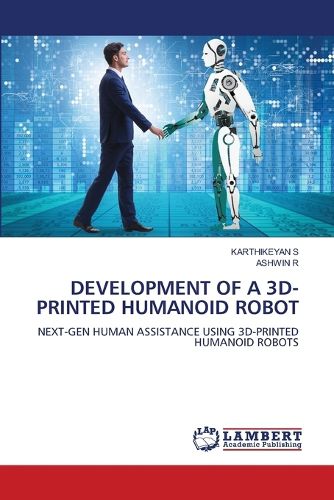Readings Newsletter
Become a Readings Member to make your shopping experience even easier.
Sign in or sign up for free!
You’re not far away from qualifying for FREE standard shipping within Australia
You’ve qualified for FREE standard shipping within Australia
The cart is loading…






The Development of a 3D-Printed Humanoid Robot project explores the creation of a human-like robot using affordable and accessible technologies. The robot's body is fully 3D-printed, enabling rapid prototyping, cost efficiency, and easy customization. It features movable joints controlled by servo motors, simulating basic human motions such as waving or walking. A microcontroller, such as Arduino serves as the central control unit, integrating inputs from sensors like ultrasonic detectors and microphones. These sensors allow the robot to interact with its environment through obstacle detection, voice commands, or simple object tracking. Designed for use in assistive and educational settings, the robot can support tasks in homes, classrooms, or healthcare environments such as aiding elderly users or teaching students about robotics and programming.The project highlights how combining 3D printing with open-source hardware and software enables the development of affordable, functional humanoid robots with real-world applications.
$9.00 standard shipping within Australia
FREE standard shipping within Australia for orders over $100.00
Express & International shipping calculated at checkout
Stock availability can be subject to change without notice. We recommend calling the shop or contacting our online team to check availability of low stock items. Please see our Shopping Online page for more details.
The Development of a 3D-Printed Humanoid Robot project explores the creation of a human-like robot using affordable and accessible technologies. The robot's body is fully 3D-printed, enabling rapid prototyping, cost efficiency, and easy customization. It features movable joints controlled by servo motors, simulating basic human motions such as waving or walking. A microcontroller, such as Arduino serves as the central control unit, integrating inputs from sensors like ultrasonic detectors and microphones. These sensors allow the robot to interact with its environment through obstacle detection, voice commands, or simple object tracking. Designed for use in assistive and educational settings, the robot can support tasks in homes, classrooms, or healthcare environments such as aiding elderly users or teaching students about robotics and programming.The project highlights how combining 3D printing with open-source hardware and software enables the development of affordable, functional humanoid robots with real-world applications.